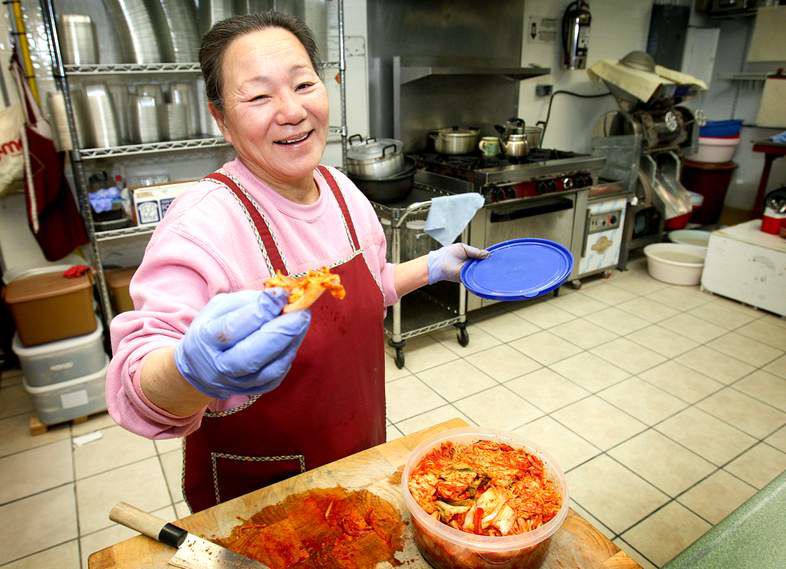Auto industry thriving in Alabama
Published 4:00 am Saturday, February 19, 2011

- Young Bambino prepares food at the Seoul Market, part of Montgomery’s growing Korean community.
MONTGOMERY, Ala. — Few people in this city 800 miles south of Detroit cared much about the auto industry until Hyundai announced it would build cars here nine years ago.
These days, Montgomery cannot stop talking about it.
Hyundai and its sister company, Kia, which opened a plant last year just across the Georgia state line, have brought thousands of well-paying jobs to the region and even helped nurture a little Korean culture in the first capital of the old Confederacy. Hyundai is running its Montgomery plant almost nonstop, and rarely do more than a few weeks pass without word that another parts supplier has dozens of new positions to fill, typically offering good benefits and double the pay the average Alabaman earns.
Hyundai, which will observe its 25th anniversary selling vehicles to American drivers on Sunday, was little more than an ambitious, second-tier brand when it chose to build its first U.S. car factory just south of Montgomery. But during the recent recession, the South Korean company thrived as Americans sought out value-priced cars just as Hyundais were improving in quality.
In 2010, Hyundai and Kia both posted their highest sales in the United States and, together, surged ahead of the Ford Motor Co. to become the fourth-largest automaker worldwide. Hyundai built 300,000 cars in Montgomery last year and sold most of them in the United States.
“If folks looked deeply at how far we’ve gone so quickly, from having no U.S. production five years ago to where we are today, it’s amazing,” John Krafcik, chief executive of Hyundai Motor America, said. “I don’t know that any company has gotten to such a high level of local assembly as Hyundai that fast.”
While Michigan’s dependence on the auto industry caused it to have one of the nation’s highest unemployment rates in recent years, the presence of Hyundai and Kia has helped Alabama keep its jobless rate among the lowest in the Southeast even as textile mills continue to close.
“As far as the pay, nobody else around here can compete with them,” said Richard Watson, a former auto mechanic who was out of work for a year and a half before getting a temporary job at the Kia plant in West Point, Ga., last fall. He said some co-workers drove two hours each way because the plant’s jobs were in such demand.
Hyundai is running its Montgomery plant, which employs 2,650, around the clock on weekdays and occasional Saturdays to keep up with demand. Last summer, it moved production of its Santa Fe sport utility vehicle 95 miles northeast to the Kia plant to free up capacity in Montgomery. Kia recently hired 600 additional workers to staff a second shift for the Santa Fe and plans a third, with 1,000 more jobs.
Both carmakers expect to easily top their 2010 sales in the United States this year. Hyundai’s sales were up 22 percent in January; Kia’s rose 25.6 percent, the highest among the industry’s larger players.
Hyundai makes its own engines in Montgomery, and transmissions for its cars come from a Hyundai-owned company, Powertech, which is attached to the Kia plant.
Alabama lists 138 suppliers that support the Hyundai plant, directly or indirectly.
More than 50 companies have followed Hyundai to the Montgomery area from Korea, with executives and their families in tow. The city’s Korean population has jumped from about 100 before Hyundai to more than 3,000 today, said Su Yong Sim, president of the Korean-American Association of Greater Montgomery and a contractor who moved from Houston to help build part of the Hyundai plant.
About 10 Korean restaurants, a dozen Korean churches and a few small grocery stores like the Seoul Market, which stocks items as diverse as dried anchovies and toothpaste from Korea, have sprouted up around town.
Montgomery’s recently struggling downtown, home to the Hank Williams Museum, has enjoyed a Hyundai-fueled building boom, anchored by a new Renaissance Hotel where the televisions can be set to greet visiting executives in Korean.
For more than a year, workers at the Hyundai plant have been putting in 10 hours of overtime a week as part of their regular schedule, plus occasional Saturdays. At an average wage of about $20 an hour, the extra hours mean workers here are earning more than many workers at the unionized plants up north. The United Automobile Workers union has long tried to organize plants in the United States operated by foreign carmakers, most of which are in the South, but has yet to succeed anywhere.
Hyundai’s leadership in both fuel economy and price is largely responsible for the company’s growth. The company said the vehicles it sold in January had an average fuel economy of 34.7 mpg, meaning it is already close to meeting future government standards without a single hybrid car in its lineup. (The new gas-electric hybrid Sonata has already arrived at some dealerships.)
At the same time, the vehicles’ quality — the subject of a billboard alongside the freeway in front of the Montgomery plant — has improved greatly, to the point that persuading shoppers to try a Hyundai is far easier, said Rob Butler, who has owned the Butler Hyundai dealership in Indianapolis since 1988.
“We’re on a lot more shopping lists that we used to be,” Butler said. “Hyundai’s really crashed through that old perception of what Hyundai used to be. Now, not only are they better-priced but they’re a better car.”






